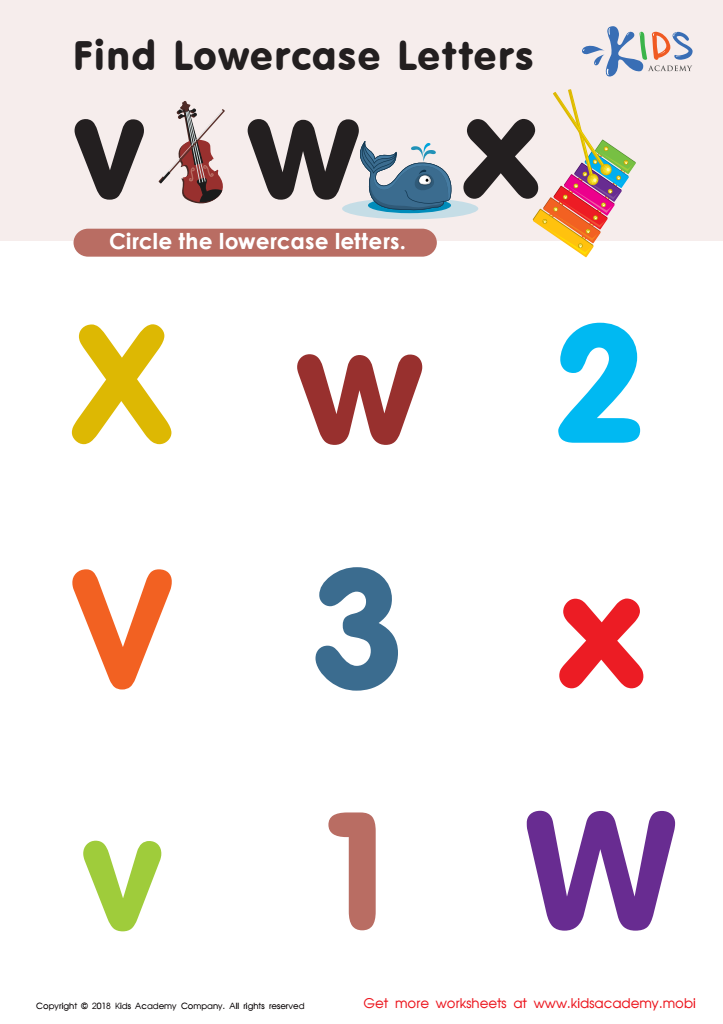Lowercase identification Worksheets for Ages 6-8
5 filtered results
-
From - To
Welcome to our Lowercase Identification Worksheets, designed specifically for children aged 6-8! These engaging worksheets are perfect for enhancing your child's literacy skills by helping them recognize and differentiate lowercase letters. Each activity is thoughtfully crafted to make learning fun and interactive, catering to diverse learning styles. Your child will participate in tracing, matching, and identifying letters through colorful and stimulating exercises. By practicing lowercase letter recognition, children will build a solid foundation in reading and writing. Ideal for both classroom and home use, our worksheets are a fantastic resource to encourage learning through play and exploration. Get started today!


Find Lowercase Letters d e f Worksheet


Find Lowercase Letters y z Worksheet


Find lowercase letters a b c Worksheet


Lowercase Letters Search: Assessment Worksheet


Find Lowercase Letters v w x Worksheet
Lowercase letter identification is crucial for children ages 6-8, as it forms the foundation for their reading and writing skills. At this developmental stage, students are transitioning from learning basic phonics to constructing sentences and comprehending texts. Recognizing lowercase letters is vital, as they are the most commonly used in written language. Without a solid grasp of these letters, children may struggle with spelling and fluency, which can hinder their overall literacy progress.
Furthermore, understanding lowercase letters paves the way for effective communication and critical thinking. As children start writing, they need to know how to correctly form those letters to express their ideas clearly. Recognizing the difference between uppercase and lowercase letters is also important, as it affects the meaning of words and sentences in writing. For instance, improper capitalization can lead to misunderstandings and incorrect grammar.
Parents and teachers can support this process through engaging activities, such as matching games, letter-themed crafts, and reading together. This involvement not only enhances letter recognition but also fosters a love for learning. By prioritizing lowercase identification, adults can help children build confidence in their literacy skills and lay the groundwork for academic success.
 Assign to My Students
Assign to My Students








.jpg)










